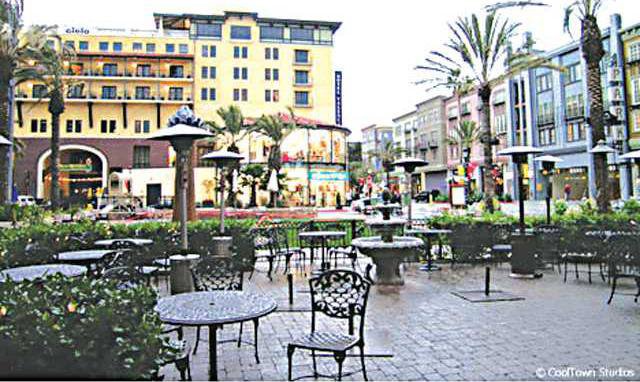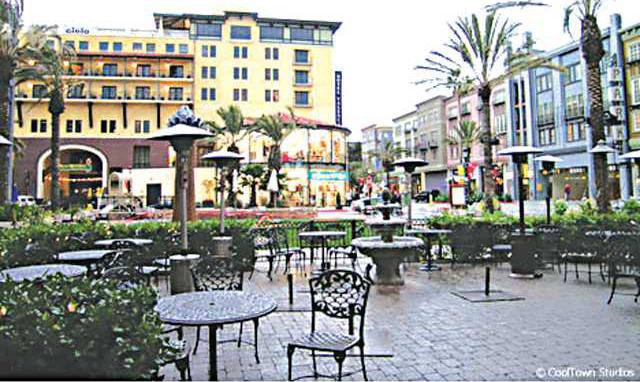Creating a true downtown neighborhood that doubles as a destination for Manteca residents is what Debby Moorhead believes will best strengthen the heart of the city.
Moorhead wants to see an undertaking styled after San Jose’s widely-acclaimed Santana Row. The European-style shopping area in San Jose is an urban environment designed for people to live work, and play. There are more than 1,000 residents who call Santana Row home including 219 privately owned condos and 295 rental townhouses and flats. The development has a rich mixture of restaurants, stores, grassy plazas, courtyards, fountains, extra-wide sidewalks, and a park that is used for a farmers market, live music and other gatherings.
Moorhead, who is in her second year on the City Council, is one of five candidates seeking election Nov. 2 as Manteca’s mayor for the next four years. The others are current Mayor Willie Weatherford, retired municipal senior planner Ben Cantu, former mayor Carlon Perry, and entrepreneur Samuel Anderson.
Moorhead makes it a point to go to Santana Row whenever she is in the San Jose area
“It’s great waiting to be seated for dinner and looking up at a second floor and see people working out in a health club or looking down the street at people shopping and (simply enjoying) their neighborhood,” Moorhead said.
Moorhead said the design of Santana Row makes it a 24-hour neighborhood for those who live there but also has created a major draw for people in the San Jose area at the same time.
She believes the Manteca Redevelopment Agency could take a lead role in identifying the best site near the existing core of downtown for a Santana Row-style project with the goal of what is developed spurring other private sector investment in existing buildings. To make her plan work, she believes the historic definition of downtown’s boundaries needs to be extended to go north to at least Alameda Street and east to Powers Avenue.
Obviously Manteca couldn’t support an upscale project or even one as large as San Jose’s, but Moorhead is convinced it will work.
“I see a lot of potential in downtown,” Moorhead said. “We can draw 5,000 to 10,000 people downtown for a parade and thousands of people for other events. It is the core of our community.”
She noted that unlike many valley cities, Manteca’s downtown is still at the center of the community.
The problem, as Moorhead sees it, is a lack of residents downtown that could support businesses and restaurants as well as the absence of a major daily draw. That draw would be a dining and shopping environment complete with public gatherings that you can’t get in a modern shopping center.
While such an undertaking is more long-term and would require the RDA to buy up property over the years and partner with an eventual developer, there are several things Moorhead believes need to be done in the short-term to improve downtown.
They include:
•shortening the median in the 100 block of North Main Street to allow more vehicles into the left turn pockets.
•removing the bulb out by the Manteca Bedquarters on Yosemite Avenue noting that the reason why things keep having to be planted is that people keep driving over it as they do not see it.
•concentrating efforts to get property owners more involved with downtown as few businesses also own their buildings.
To contact De
Moorhead wants to see an undertaking styled after San Jose’s widely-acclaimed Santana Row. The European-style shopping area in San Jose is an urban environment designed for people to live work, and play. There are more than 1,000 residents who call Santana Row home including 219 privately owned condos and 295 rental townhouses and flats. The development has a rich mixture of restaurants, stores, grassy plazas, courtyards, fountains, extra-wide sidewalks, and a park that is used for a farmers market, live music and other gatherings.
Moorhead, who is in her second year on the City Council, is one of five candidates seeking election Nov. 2 as Manteca’s mayor for the next four years. The others are current Mayor Willie Weatherford, retired municipal senior planner Ben Cantu, former mayor Carlon Perry, and entrepreneur Samuel Anderson.
Moorhead makes it a point to go to Santana Row whenever she is in the San Jose area
“It’s great waiting to be seated for dinner and looking up at a second floor and see people working out in a health club or looking down the street at people shopping and (simply enjoying) their neighborhood,” Moorhead said.
Moorhead said the design of Santana Row makes it a 24-hour neighborhood for those who live there but also has created a major draw for people in the San Jose area at the same time.
She believes the Manteca Redevelopment Agency could take a lead role in identifying the best site near the existing core of downtown for a Santana Row-style project with the goal of what is developed spurring other private sector investment in existing buildings. To make her plan work, she believes the historic definition of downtown’s boundaries needs to be extended to go north to at least Alameda Street and east to Powers Avenue.
Obviously Manteca couldn’t support an upscale project or even one as large as San Jose’s, but Moorhead is convinced it will work.
“I see a lot of potential in downtown,” Moorhead said. “We can draw 5,000 to 10,000 people downtown for a parade and thousands of people for other events. It is the core of our community.”
She noted that unlike many valley cities, Manteca’s downtown is still at the center of the community.
The problem, as Moorhead sees it, is a lack of residents downtown that could support businesses and restaurants as well as the absence of a major daily draw. That draw would be a dining and shopping environment complete with public gatherings that you can’t get in a modern shopping center.
While such an undertaking is more long-term and would require the RDA to buy up property over the years and partner with an eventual developer, there are several things Moorhead believes need to be done in the short-term to improve downtown.
They include:
•shortening the median in the 100 block of North Main Street to allow more vehicles into the left turn pockets.
•removing the bulb out by the Manteca Bedquarters on Yosemite Avenue noting that the reason why things keep having to be planted is that people keep driving over it as they do not see it.
•concentrating efforts to get property owners more involved with downtown as few businesses also own their buildings.
To contact De





